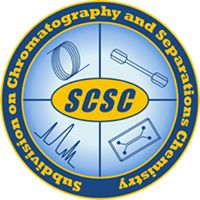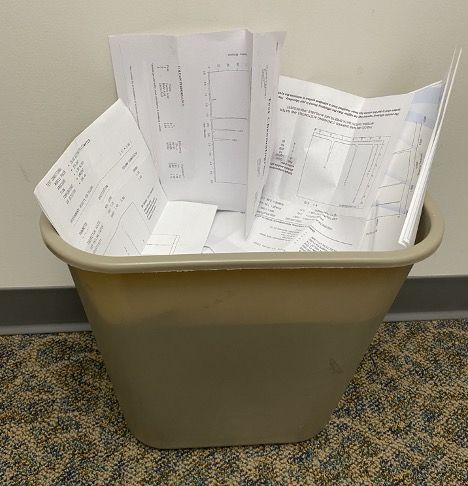The LCGC Blog: Does the Paper in the Column Box Mean Anything Anymore?
Pretty much every commercial chromatography column has some sort of release testing done on it before it leaves the manufacturer. Just how valuable are those tests to the end user? Should column Certificates of Analysis go straight to the rubbish bin?

This blog is a collaboration between LCGC and the American Chemical Society Analytical Division Subdivision on Chromatography and Separations Chemistry.
Those Who Fail to Learn History...
In 1980, Atwood and Goldstein of PerkinElmer published one of the earliest studies on lot-to-lot selectivity variability across 24 lots of a commercial high performance liquid chromatography (HPLC) packing material. The week I’m writing this blog (mid-August 2020), I was asked by a major column manufacturer to participate in a focus group on a proposed new quality control (QC) procedure for their LC columns. I guess, even after 40 years, we have yet to find a perfect solution to the problem of demonstrating and achieving acceptable column precision. During the conversation, I made an offhand comment that most end users probably can’t remember the last time they looked at the paperwork inside a column box (see Figure 1). Indeed, many vendors are moving toward minimal packaging and inserts, whether motivated by cost-saving measures or environmental concerns. As long as the information is easily and immediately retrievable, either from the internet or embedded in the electronic data chips leashed to some vendors’ columns, this seems like a positive change. I still highly recommend that every user read the column care guides on a new model of column. Knowing the difference between a pH 7 and pH 8 upper limit (or 45 vs. 60 °C) can save you headaches down the way, and the guides usually provide the best storage and rescue procedures.
Figure 1. The frequent fate of test papers that arrive in the box with a new chromatography column.

Bad Column or Bad Method?
Aside from column care, most vendors provide a Certificate of Analysis (CoA) with some test data, and perhaps with some acceptance criteria. These CoAs are where I think the points of contention really start. My colleagues and I have too many horror stories (spanning multiple column manufacturers) of separations that fail during column lot-to-lot robustness studies or upon transfer to another lab that purchased its own column. Of course, the columns all passed their manufacturer’s QC tests. Was the root cause a poor method (for example, robustness issues, leveraging minor column interactions, and so on), poor execution of the method (those pesky humans), or were the vendor tests insufficient? Honestly, each of these has been a factor at least once in my history, but I believe improved column testing could help prevent many of these instances.
Column Characterization
Column tests can span from the very simple (plates or tailing factor on a single component) to what is most commonly seen (a few components with a plate, selectivity, and tailing factor assessment), to much more comprehensive probing of the actual chromatographic interactions, such as those described by NIST and Waters (2,3). The more thorough testing is usually performed at the batch level, and not as an individual column release test, because the latter are more resource-intensive and move from a QC test to true column characterization. A recent review of the many possibilities of executing this type of evaluation demonstrates there is no “one size fits all” test, even within the relatively constrained realm of reversed-phase stationary phases (4).
Double Standards
In my industry (pharmaceuticals), there is the expectation that our drug manufacture process is fully characterized and controlled; yet the tools we use to assess our processes, such as chromatography columns, are not held to the same standards. The nightmare scenario for me is not being able to release life-saving medicines because a new column failed to perform consistently with previous lots. If I had a magic wand, every column I receive would have every chemical interaction identified and tightly controlled by the manufacturer. I had even hoped to use characterization tests, such as the hydrophobic subtraction model (5), to assess column manufacture precision (6). The reality is that the execution of this type of rigorous testing on every column, at present, would be cost-prohibitive to the industry.
The Answer Is...
So, kudos to those manufacturers that perform more than the easy, simple column tests. Laurels to those who listened to Atwood and Goldstein’s advice “... to deliberately choose test compounds that expose variations” (7). Accolades to those who put realistically appropriate specifications on those tests. Please keep working toward “the perfect test.” In pharma, we’re counting on you, the column makers, to deliver the same product, day-in and day-out, for the life cycle of our products, which may be decades. To give an answer to the question I posed as the title of this blog: No, the paper in the box is irrelevant. Having the best tests possible on those Certificates of Analysis, however, is absolutely critical to us, the end users.
The views expressed here in no way reflects on my employer, this publication, nor any group to which I belong.
References
- J.G. Atwood and J. Goldstein, J. Chromatogr. Sci. 18 650–654 (1980).
- L.C. Sander and S.A. Wise, J. Sep. Sci. 26 283–294 (2003).
- U.D. Neue, E. Serowik, P. Iraneta, B.A. Alden, and T.H. Walter, J. Chromatogr. A 849 87–100 (1999).
- P. Žuvela, M. Skoczylas, J. Jay Liu, T. Ba̧czek, R. Kaliszan, M.W. Wong, and B. Buszewski, Chem. Rev. 119 (2019) 3674–3729 (2019).
- L.R. Snyder, J.W. Dolan, D.H. Marchand and P.W. Carr, Adv. Chromatogr. 50 297–376 (2015).
- J.G. Shackman, J. Chromatogr. A 1475 116–118 (2016).
- J.G. Atwood and J. Goldstein, Anal. Chem. 53 1046–1046 (1981).

Jonathan Shackman is a senior principal scientist in the Chemical Process Development department at Bristol Myers Squibb (BMS) and is based in New Jersey, USA. He earned his two B.S. degrees at the University of Arizona and his PhD in Chemistry from the University of Michigan under the direction of Prof. Robert T. Kennedy. Prior to joining BMS, he held a National Research Council position at the National Institute of Standards and Technology (NIST) and was a professor of chemistry at Temple University in Philadelphia, Pennsylvania. To date he has authored over 30 manuscripts and two book chapters, has presented over 30 oral or poster presentations, and holds one patent in the field of separation science. Shackman was recently re-elected to the executive board of the ACS Subdivision on Chromatography and Separations Chemistry (SCSC) for a second term.

This blog is a collaboration between LCGC and the American Chemical Society Analytical DivisionSubdivision for Chromatography and Separations Chemistry (ACS AD SCSC). The goals of the subdivision include:
- promoting chromatography and separations chemistry
- organizing and sponsoring symposia on topics of interest to separations chemists
- developing activities to promote the growth of separations science
- increasing the professional status and the contacts between separations scientists.
Rethinking Chromatography Workflows with AI and Machine Learning
April 1st 2025Interest in applying artificial intelligence (AI) and machine learning (ML) to chromatography is greater than ever. In this article, we discuss data-related barriers to accomplishing this goal and how rethinking chromatography data systems can overcome them.

.png&w=3840&q=75)

.png&w=3840&q=75)



.png&w=3840&q=75)



.png&w=3840&q=75)